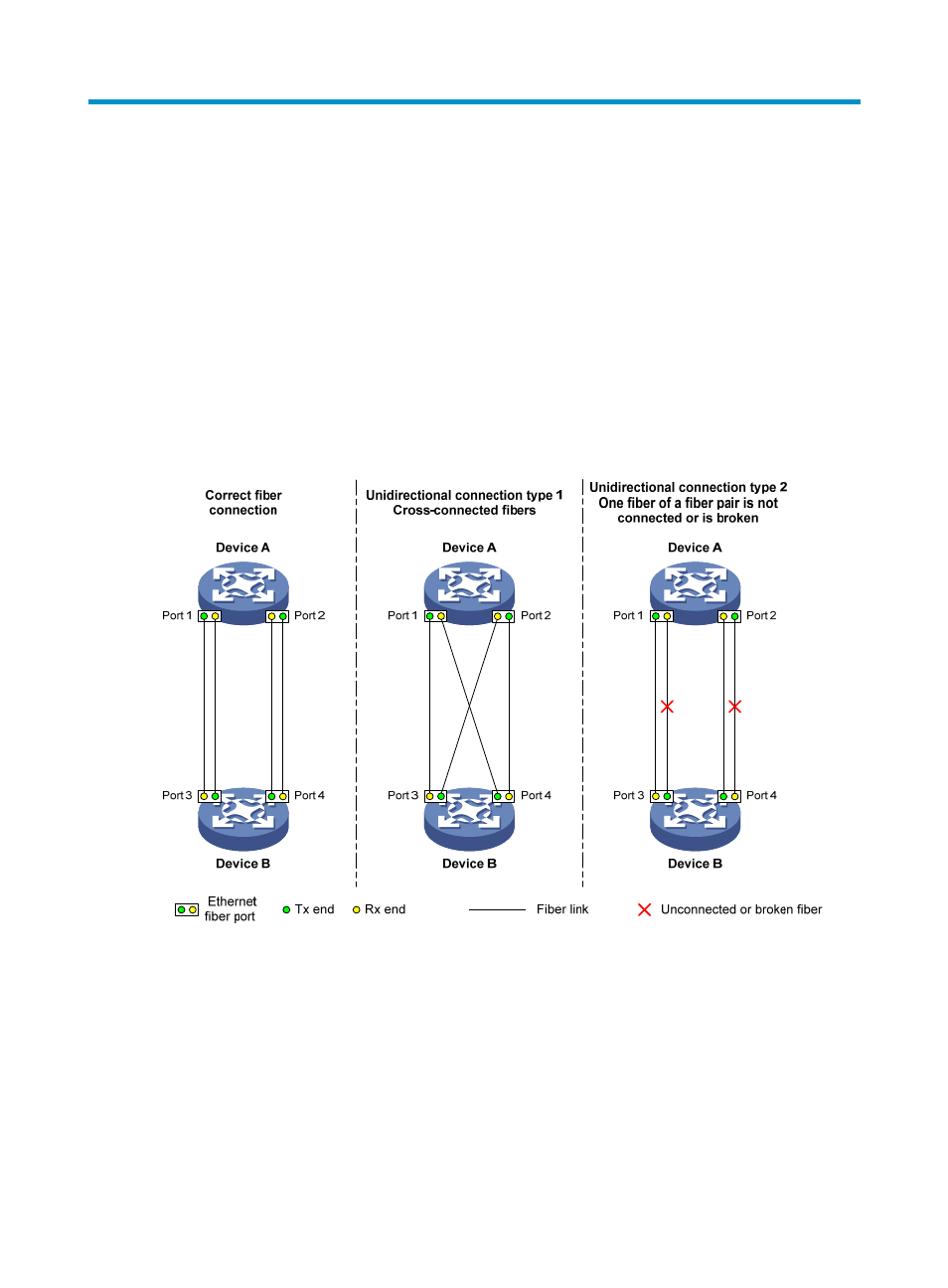Configuring dldp, Overview, Enabling cfd – H3C Technologies H3C S12500-X Series Switches User Manual
Page 31: Configuring service instances

23
Configuring DLDP
Overview
Unidirectional links occur when one end of a link can receive packets from the other end, but the other
end cannot receive packets sent by the first end.
Unidirectional fiber links include the following types:
•
Occur when fibers are cross-connected.
•
Occur when a fiber is not connected at one end or when one fiber of a fiber pair gets broken.
shows a correct fiber connection and the two types of unidirectional fiber connections.
Figure 6 Correct and incorrect fiber connections
Physical layer detection mechanisms, such as auto-negotiation, can detect physical signals and faults.
They cannot detect communication failures for unidirectional links where the physical layer state is
connected.
As a data link layer protocol, the Device Link Detection Protocol (DLDP) detects whether the fiber link or
twisted-pair link is correctly connected at the link layer, and whether the two ends can exchange packets
correctly. When DLDP detects unidirectional links, it can automatically shut down the faulty port to avoid
network problems. Alternatively, a user can manually shut down the faulty port. DLDP cooperates with
physical layer protocols to monitor link status and avoid physical and logical unidirectional links.
- H3C S5560 Series Switches H3C WX6000 Series Access Controllers H3C WX5000 Series Access Controllers H3C WX3000 Series Unified Switches H3C LSWM1WCM10 Access Controller Module H3C LSWM1WCM20 Access Controller Module H3C LSQM1WCMB0 Access Controller Module H3C LSRM1WCM2A1 Access Controller Module H3C LSBM1WCM2A0 Access Controller Module H3C S9800 Series Switches H3C S5130 Series Switches H3C S5120 Series Switches H3C S6300 Series Switches H3C S5820V2 Series Switches H3C S5830 Series Switches H3C S5830V2 Series Switches H3C S3600V2 Series Switches
